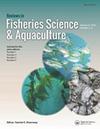Marine Fisheries Management in a Changing Climate: A Review of Vulnerability and Future Options
引用次数: 113
Abstract
Marine capture fisheries are an important source of protein globally, with coastal and oceanic fish providing a rich source of essential fatty acids, vitamins, and minerals. Fisheries also support economies and important social structures in many nations, particularly developing nations (Allison et al., 2009). Marine fisheries are under increasing threat from climate change, with climate change now identified as the latest threat to the world's fast declining fish stocks (UNEP, 2008; Cochrane et al., 2009). Marine fisheries will be exposed to increasing sea surface temperatures, ocean acidification, sea level rise, increasing storm intensity and altered ocean circulation, and rainfall patterns that will affect target species through a range of direct and indirect mechanisms. The sensitivity of fish stocks to these changes will determine the range of potential impacts to life cycles, species distributions, community structure, productivity, connectivity, organism performance, recruitment dynamics, prevalence of invasive species, and access to marine resources by fishers. Many fisheries are already experiencing changes in target species diversity and abundance, species distribution, and habitat area, as well as loss of fishing effort due to intensifying storms (Johnson and Marshall, 2007; Hobday et al., 2008; UNEP, 2008). Using a vulnerability assessment framework, we examine the level of vulnerability of marine fisheries to climate change and the factors that will temper vulnerability, such as adaptive capacity. Assessing fisheries vulnerability to climate change is essential to prioritize systems in greatest need of intervention, understand the drivers of vulnerability to identify future research directions, and more importantly, to review current fisheries management with the view to develop management responses that will be effective in securing the future sustainability of marine fisheries.气候变化下的海洋渔业管理:脆弱性和未来选择综述
海洋捕捞渔业是全球蛋白质的重要来源,沿海和海洋鱼类提供了丰富的必需脂肪酸、维生素和矿物质。渔业还支持许多国家,特别是发展中国家的经济和重要的社会结构(Allison et al., 2009)。海洋渔业受到气候变化的威胁越来越大,气候变化现在被确定为对世界快速下降的鱼类资源的最新威胁(UNEP, 2008;Cochrane et al., 2009)。海洋渔业将面临海面温度升高、海洋酸化、海平面上升、风暴强度增加、海洋环流改变以及降雨模式的影响,这些将通过一系列直接和间接机制影响目标物种。鱼类种群对这些变化的敏感性将决定对生命周期、物种分布、群落结构、生产力、连通性、生物性能、招募动态、入侵物种流行以及渔民获取海洋资源的潜在影响范围。许多渔业已经经历了目标物种多样性和丰度、物种分布和栖息地面积的变化,以及由于风暴加剧而造成的捕捞损失(Johnson和Marshall, 2007;Hobday et al., 2008;联合国环境规划署,2008)。利用脆弱性评估框架,我们研究了海洋渔业对气候变化的脆弱性水平以及缓和脆弱性的因素,如适应能力。评估渔业对气候变化的脆弱性对于确定最需要干预的系统的优先次序,了解脆弱性的驱动因素以确定未来的研究方向至关重要,更重要的是,审查当前的渔业管理,以制定有效的管理对策,以确保海洋渔业的未来可持续性。
本文章由计算机程序翻译,如有差异,请以英文原文为准。
求助全文
约1分钟内获得全文
求助全文

 求助内容:
求助内容: 应助结果提醒方式:
应助结果提醒方式:


